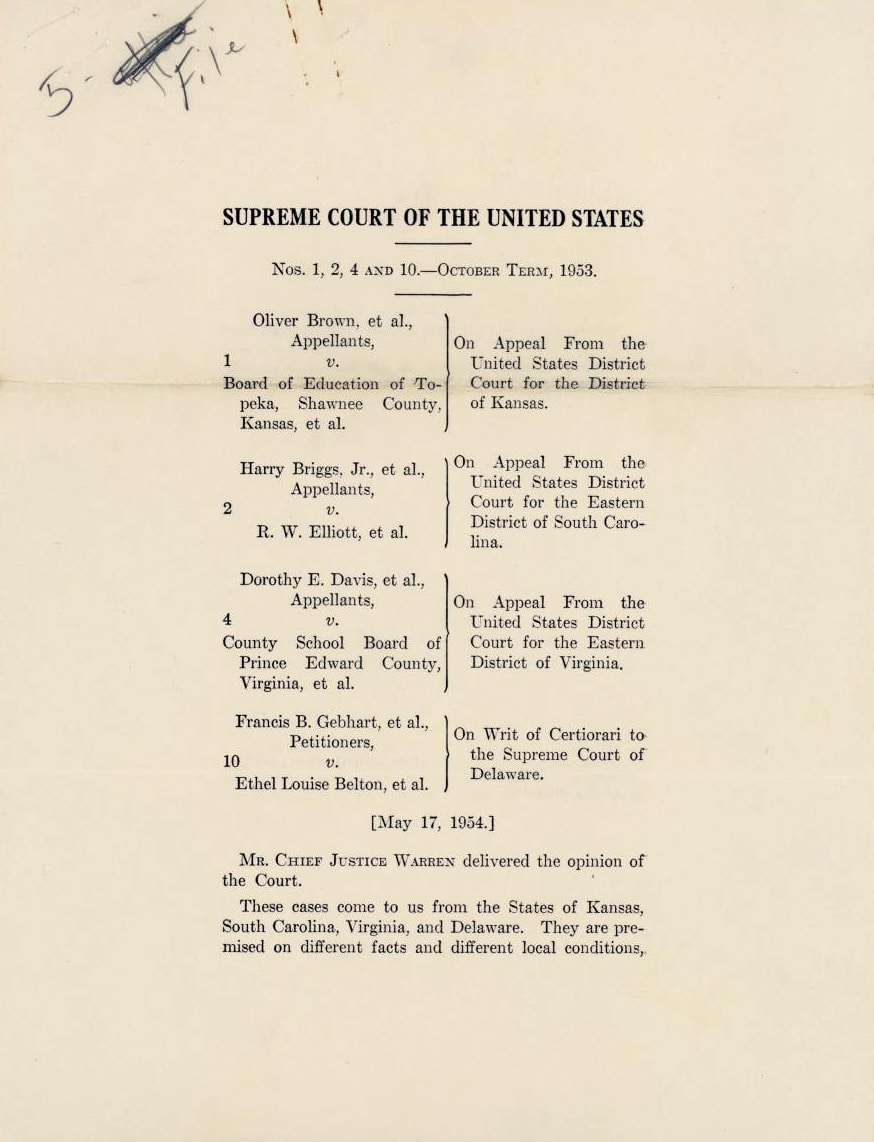RESOURCES
COURT CASES
Brown v. Board of Education of Topeka, Kansas
1951
The original Brown v. Board of Education of Topeka, Kansas, was filed in 1951 when Oliver Brown, a Black parent and railroad worker, joined with twelve other African American families to challenge school segregation in Topeka. Brown had attempted to enroll his daughter, Linda Brown, in a nearby whites-only elementary school, but was denied and directed instead to an all-Black school much farther away. With legal assistance from the NAACP Legal Defense Fund, led by Thurgood Marshall, the families filed suit in federal district court, arguing that racially segregated schools violated the Equal Protection Clause of the 14th Amendment to the U.S. Constitution.
The Kansas case was selected as the lead because it came from a northern state with relatively moderate segregation and because the facts were simple yet powerful: a little girl forced to travel past a better-equipped white school to attend an inferior one, solely because of her race.
A central piece of evidence in the case was the “Doll Test”, a psychological study conducted by Drs. Kenneth and Mamie Clark, two pioneering African American psychologists. The Clarks presented African American children between the ages of three and seven with two dolls—identical except for skin color—and asked them questions like “Which doll is the nice doll?” and “Which doll looks bad?” The children overwhelmingly attributed positive qualities to the white doll and negative traits to the Black doll. Many even preferred the white doll, despite recognizing that the Black doll looked like them. The study demonstrated that segregation—and the social messages it communicated—damaged the self-perception and self-esteem of Black children at a formative age. This was key evidence in proving that separate schools were not, in fact, equal in effect or experience.
Despite the compelling social science evidence, the U.S. District Court in Kansas ruled against the plaintiffs, stating it was bound by the precedent of Plessy v. Ferguson (1896), which allowed “separate but equal” facilities. However, the court did acknowledge that segregation had a detrimental effect on Black children’s development. When the NAACP appealed, the U.S. Supreme Court chose to consolidate the Kansas case with four others from Virginia, South Carolina, Delaware, and Washington, D.C., under the collective name Brown v. Board of Education.
The Kansas case was selected as the lead because it came from a northern state with relatively moderate segregation and because the facts were simple yet powerful: a little girl forced to travel past a better-equipped white school to attend an inferior one, solely because of her race. The inclusion of the Doll Test in the Kansas case helped frame school segregation as not just unequal in terms of physical facilities, but psychologically and morally harmful—providing a human lens for the justices to reconsider what “equal protection” truly meant. This laid the foundation for the Court’s unanimous decision in 1954 declaring that “separate educational facilities are inherently unequal,” overturning Plessy and mandating the desegregation of public schools across the country.
